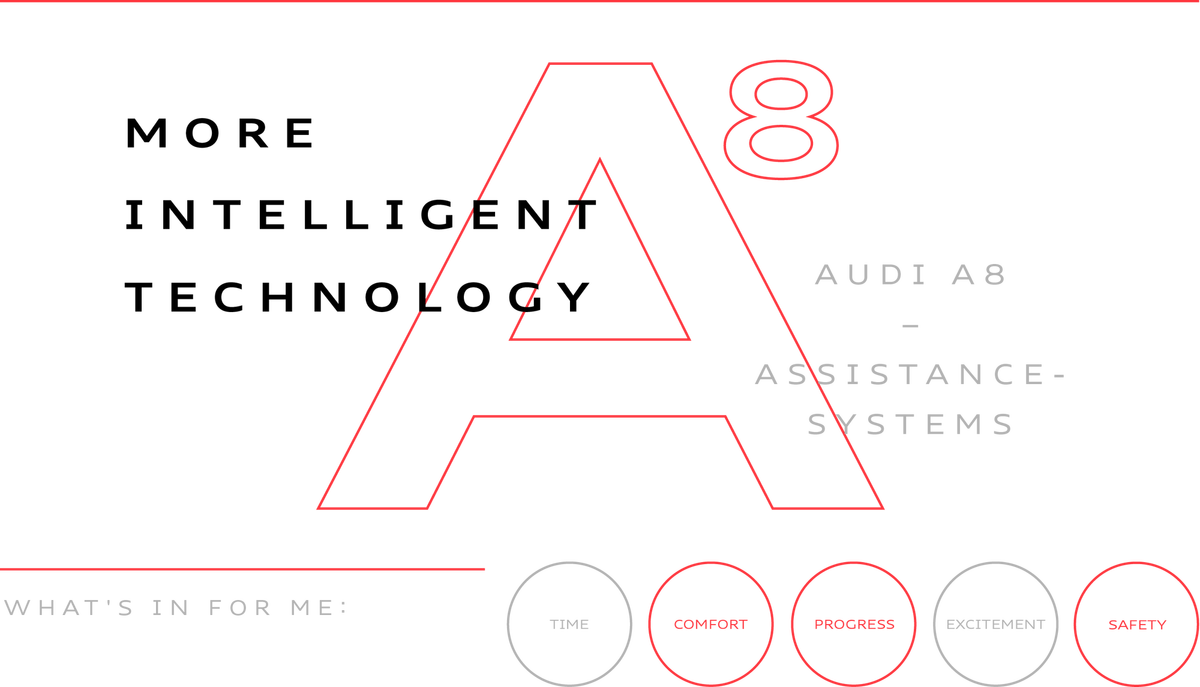
Enhanced comfort, more safety: The driver assistance systems* in the new Audi A8 are more progressive than ever. They make the driver’s life easier and can help prevent accidents.
Hermann J. Müller (copy) & Robert Grischek (photo)8 for A8
Central driver assistance controller
Driver assistance systems are based on continuous and, in key areas, redundant monitoring of the vehicle surroundings. Delivering that takes a huge set of sensors comprising radar and ultrasonic sensors, cameras and—for the first time in the new Audi A8—a laser scanner. Compiled in the central driver assistance controller (zFAS) to create a comprehensive model of the surroundings, all the sensor data are made available to a wealth of driver assistance functions. About the size of a tablet, the zFAS, now celebrating its debut in the A8, is a high-tech data cruncher. It integrates high-performance computers, including the Nvidia Tegra K1 as well as the EyeQ3 made by Mobileye, one of the world’s leading providers of image processing algorithms for automotive applications.
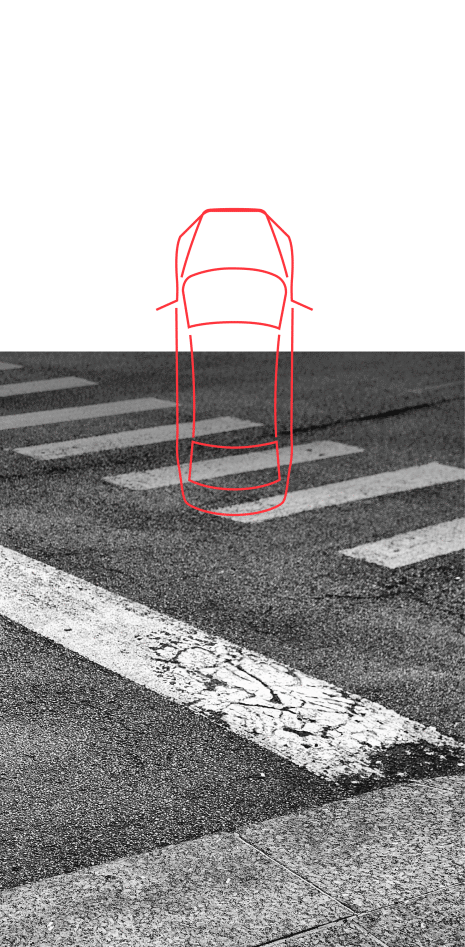
1
Adaptive driver assistant
It’s the central component in the optional Tour assist package available for the new Audi A8: the adaptive driver assistant. This new generation of adaptive cruise control (ACC) supports the driver at speeds of up to 250 kilometers per hour with longitudinal and lateral motion, i.e. keeping the car in its lane as well as braking and accelerating. Besides allowing for vehicles ahead, the system takes account of real-time information and route data such as speed limits, turns, intersections and rotaries.
Using this information, the car accelerates or slows down automatically and, where necessary, adapts its speed to the course of the road and prevailing speed limits. On top of that, the system is able to harness the vast amount of data to enable a predictive and fuel-saving driving style. How? For example, by coordinating coasting, engine thrust and acceleration phases intelligently when planning the speeds at which to take turns and remain within speed limits. Fuel consumption is reduced especially when the drive select driving dynamics system is in efficiency mode.
The bottleneck assistant is another feature of the system, which firmly and continuously nudges the steering to help intuitively guide the car through narrow spaces and construction sites, across the full range of speeds. By influencing longitudinal control, the system can prevent attempts to enter alleyways that are too narrow and assist the driver with positioning the car in line with the gap between two cars in the neighboring lane.

Machine proposes, man disposes: State-of-the-art driver assistance systems are bringing increasingly significant change to the nature of driving. The goal is greater comfort in the car. That means not only safer and more relaxed driving but also road travel that causes less pollution and faces fewer traffic jams.
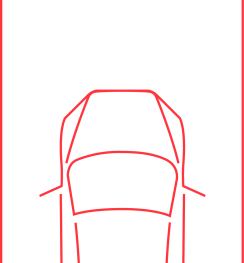
2
Lane departure warning system
The active lane departure warning system, another optional extra, lives up to its name. Working on the principle that three eyes are better than two, it uses a camera to permanently track the lane markings when the car is in motion. Should the driver’s attention waver and the Audi A8 be in danger of unintentionally drifting out of its lane, the system intervenes by actively keeping the car in its lane. Nevertheless, the driver always remains in control and can effortlessly override the steering torque.
3
TopView 3D
Where is the drone? This question automatically springs to mind when you see the TopView 3D function (available on request) on the MMI display. But although the depiction of your car with its immediate surroundings is as lifelike as a photo taken from a bird’s eye view, it is, in fact, a virtual image. Feeds from four cameras are converted by highly intelligent processors and clever algorithms into a brilliant aerial perspective and astonishing three-dimensional views. During parking and other maneuvers typically performed at speeds of up to 30 kilometers per hour, the car’s immediate environment is displayed, allowing for easy and accurate execution.
The optional new maneuver assistant also uses the benefits of this technology. It prompts the driver to correct the line of travel when the car risks imminent collision with an immobile object by sending an impulse to the steering wheel. If this warning is ignored, or the system detects a moving object, the Audi A8 automatically applies the brakes shortly before the impending impact so as to prevent damage to the car.

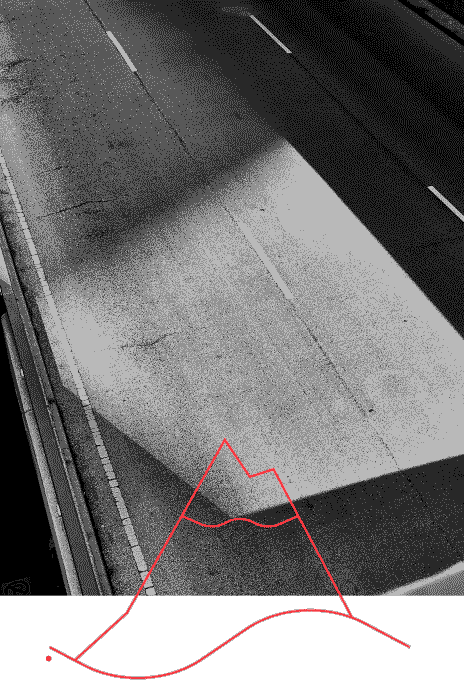
4
Predictive efficiency assistant
A friendly little reminder: A green foot appears in the Audi A8 instrument cluster and head-up display to signal visually when it’s advisable to ease off the gas. This cue from the optional predictive efficiency assistant lends support in driving with greater foresight, which in turn helps to save fuel.
A pulse sent through the accelerator pedal that builds to a gentle resistance provides an additional nudge. The car calculates parameters for coasting using navigation information, the estimated vehicle weight and current rolling resistance. Regulation of freewheeling, engine thrust and recuperation is permanently activated and highly efficient during coasting.

Tomorrow’s cars will communicate with their smart environment and respond to drivers’ personal requests. The driver assistance systems in the Audi A8 already rely on visionary technology.

5
Intersection assistant
Offered as an optional extra, this entirely new system enhances safety when approaching exits and intersections at speeds of up to 30 kilometers per hour by being able to warn the driver about potential side-on collisions. In order to do this, the area ahead of the vehicle is permanently monitored and possible cross traffic screened on the MMI display and instrument cluster.
When the car is moving, the system warns the driver of impending side-on collisions with a visual alert on the instrument cluster and by sounding an alarm. If the driver fails to respond, the intersection assistant automatically actuates the brakes at speeds of up to 10 kilometers per hour.
6
Emergency assist
Losing consciousness at the steering wheel is every driver’s worst nightmare. To limit the potentially catastrophic consequences when the driver fails to engage in steering activities to the usual degree, the optional emergency assist in the new Audi A8 registers the driver’s inactivity based on a variety of criteria and, at speeds upward of 55 kilometers per hour, comes into action***.
As soon as the sensors detect an unusual lack of activity, the system starts to escalate its response in stages: First, it assumes control of the vehicle’s longitudinal and lateral guidance and urges the driver to resume control with an alert in the instrument cluster. The next stage is the sounding of an alarm (the volume on the infotainment system is lowered in anticipation of this), before the vehicle again warns the driver to regain control first by jerking the seatbelt and then jolting the brakes. If there is still no response, the system activates the hazard warning lights and independently slows the vehicle until it is brought to a complete stop. Once the car is stationary, an emergency call is immediately made, the car is not only put into park but, after a few seconds, the light is also switched on and the doors unlocked.

Emergency assist steps in if the driver unexpectedly becomes inactive.
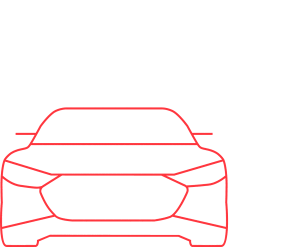
7
Hazard information
Thanks to the optional Audi connect** navigation and infotainment services, the new Audi A8 will soon be a fully networked car. For an especially impressive demonstration of these capabilities, look no further than car-to-x services including traffic sign and hazard information. The new sedan as well as other current Audi models transmit speed limits and danger spots detected by their cameras to a server. The central controller processes this information and transmits it to other Audi vehicles that are connected to the network and traveling in the vicinity of these hazards.
Back in late 2016, Audi already launched a pilot project for these car-to-x services in its models in a number of U.S. metropolitan areas. There, the new Audi A8 receives traffic light information by linking up with the central traffic controller host computers that regulate traffic lights. This data lets the driver determine whether he will make it through the next green light while traveling within the speed limit. The new services use maps from the HERE data platform, which is continually updated and expanded by Audi in cooperation with the BMW Group and Daimler AG. HERE accurately surveys traffic conditions down to the last centimeter, recording and evaluating events in real time.

Avoiding accidents is the overriding objective of the safety systems in the new Audi A8. To this end, sensors monitor the vehicle’s surroundings and a central controller evaluates this information in conjunction with the relevant route data. The car also communicates with other vehicles.
8
Pre sense 360˚
The Audi pre sense 360˚ safety system identifies hazards that threaten the car from all sides and, where necessary, initiates selective protective measures. A network of numerous sensors connected via the central driver assistance controller (zFAS) work in tandem with the mid-range radar sensors on the Audi A8 vehicle’s corners that can scan distances up to 75 meters. Together, they provide early warning of objects the car may collide with, predict the likelihood and moment of impact and minimize the effects of a crash on occupants by instituting preventative measures. Pre sense 360˚ closes all side windows and the sunroof, tightens retractable seatbelts, improves occupants’ seating position by adjusting the upper backrests, headrests and energy-absorbing pads well as activating the hazard lights to warn vehicles approaching from behind. What’s more, the new active chassis also contributes to mitigating the effects of a crash. When a side-on collision is imminent, the side under threat is raised in the blink of an eye so that the impact occurs at the safest possible location.

* Assistance systems can only support the driver within the specified system limits. The responsibility for remaining sufficiently alert and performing driving tasks always rests with the driver.
** All legal notices and information relating to availability as well as technical specifications can be found at www.audi.com/connect.
*** The system only works within system parameters. Maintaining control of the vehicle always remains the driver’s responsibility.
Further photo credits: Stocksy